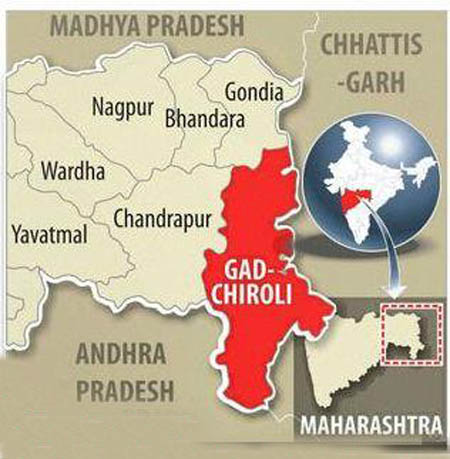Why in news?
A recent Maoist attack in Gadchiroli in Maharashtra left 15 police commandos of the C-60 wing dead.
What happened?
- Maoists torched 25 vehicles at a road construction site in Kurkheda of Gadchiroli early in the morning.
- A team of the Quick Response Team of the Gadchiroli police was on way to inspect this.
- While on road in a private vehicle, these fifteen policemen and their driver were killed by a powerful explosion set off by Maoists.
- An improvised explosive device (IED) blast was set off.
- The slain fighters were members of the elite C-60 wing.
- This is the fourth Maoist attack, since the national election began in April, 2019, in Gadchiroli which borders Chattisgarh.

What is the C-60 wing?
- Naxalite activity first expanded into Maharashtra from then-Andhra Pradesh in the 1980’s.
- The Gadchiroli district, carved out of Chandrapur district in 1982, was the most affected, with series of violence.
- Veteran police officer KP Raghuvanshi was given the charge of creating an elite commando force of the state police in 1990.
- The C-60 was thus created as a batch of 60 commandos to counter Maoist violence in Gadchiroli.
- As Naxal activities heightened in the coming years, a second branch was also created in 1994.
- They are similar to the Greyhound forces in Telangana and the SOG (Special Operation Group) units in Andhra Pradesh.
How has C-60 wing's role been?
- The contribution of C-60 has been a notable one, and they have been alternatively referred to as ‘crack commandos’.
- The commandos were recruited from the same regions where the Naxals enlisted their own fighters.
- Having the same roots, the C-60 had operational advantages compared to other units of the state police.
- These include faster maneuvering, and the greater ability to converse with the local population.
- The C-60 is qualified for combat in difficult battlegrounds, such as dense forests and over hilly terrain.
- Apart from actual combat, the C-60’s task also includes facilitating Maoists to surrender and join the mainstream.
- For this, members of the unit meet the families of Maoists to apprise them of government schemes made for ex-Maoists.
What does the recent attack imply?
- The death of security personnel in the landmine attack in Gadchiroli is another reminder of India's continued failure to crush naxalism.
- This attack has occurred despite the deployment of -
- 30 companies of the Central Reserve Police Force (a company comprises 135 personnel)
- 13 companies of the State Reserve Police Force
- 5,500 personnel of the local police in Gadchiroli and neighbouring Chandrapur district
- This exposes the lack of preparedness of the security forces on the one hand, and the boldness of the perpetrators on the other.
- The ease with which the extremists torched so many vehicles and how the response team went there without proper planning are alarming.
- In the process, standard operating procedures, including letting a road-opening team lead the way, seem to have been ignored.
What is the way forward?
- It is some comfort that the polling percentages in both Gadchiroli and Chandrapur districts have risen, compared to the 2014 elections.
- But the path of the voter to the polling booth in the naxal-dominated districts is still not an assuring one.
- The security forces deployed in the region too have not been able to instil in them a greater level of confidence.
- Notably, most of the police personnel who were killed in the latest attack seem to have been local citizens.
- India cannot afford to take the challenges of internal security lightly and needs concerted measures at tackling naxalism.
Source: Indian Express, The Hindu
